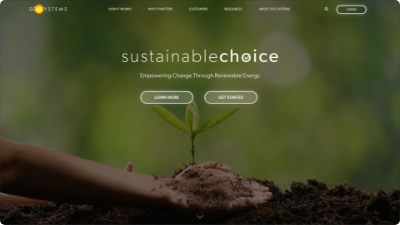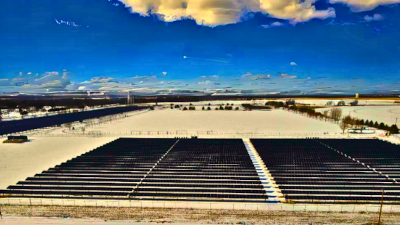Message from the CEO
As we continue to navigate the evolving landscape of renewable energy, I am constantly reminded of the dedication and innovation that drives Sol forward. This journey is guided by a commitment to sustainability and a focus on delivering impactful solutions to our customers and with our communities.
This edition of Sol SOURCE highlights some of our most exciting projects and initiatives. From groundbreaking solar developments to cutting-edge research collaborations, we are proud of the advances we are making in the clean energy transition.
One of the standout features in this issue is the article “Good Intentions, Bad Policy, and the Threat to the Clean Energy Transition.” This piece delves into the critical challenges and unintended consequences of current policies affecting our industry. It underscores the importance of thoughtful, well-informed policy decisions in ensuring a sustainable and prosperous future for clean energy.
As we look to the future, we remain focused on driving innovation with our customers, fostering collaboration with our partners, and creating sustainable impact in the communities we work in. I am grateful for the hard work and dedication of our entire team, as well as the trust and support of our partners and customers.
Check out our Soliversary video!
Celebrating 16 Years at Sol Systems
Trends & Observations
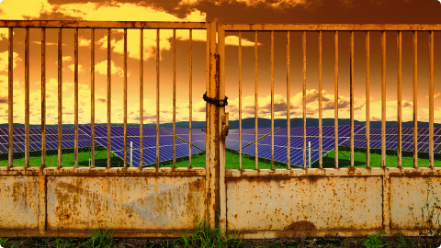
Good Intentions, Bad Policy, and the Threat to the Clean Energy Transition
Why Additionality Should Not Be a Requirement for Corporate Clean Energy Goals
Electricity generation accounts for 25% of global CO₂ emissions, and addressing this through a transition to renewable energy sources – like solar or wind – is critical to solving the climate crisis. The good news is that corporations are stepping up to procure massive amounts of clean energy to minimize their carbon footprints, documented by retiring renewable energy certificates (RECs). The World Resource Institute (WRI) establishes the global ‘rules of the road’ for emissions accounting. But those rules – specifically its Scope 2 Guidance on indirect emissions from purchased electricity, steam, heat, or cooling – are under review to be changed, and the consequences could be catastrophic to the progress of the clean energy transition.
What’s at Stake
These new proposed rules will make accounting for voluntary purchases of renewable energy, specifically of unbundled RECs, much more challenging for corporations and threatens REC markets that are vital for the transition to renewable energy. These new rules, while well-intended, will actually slow down clean energy procurement at a time when we need it most.
Perspective from the Practitioners
Clean energy practitioners who develop, finance, build, operate, invest in, or purchase power from renewable energy projects widely agree that a more difficult process for corporations to make emissions claims is not a path forward that will bolster clean energy procurement – in fact, it will set us backward. In contrast to the proposed changes, the following principles represent a consensus among most practitioners – and the evidence included in our detailed white paper offers practical examples and explanations for why these principles should be adopted.
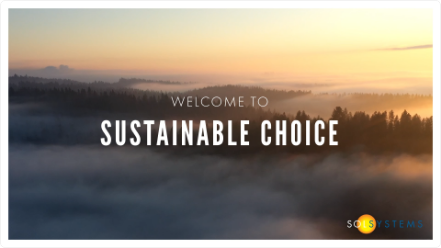
Sustainable Choice:
Empowering Change Through Renewable Energy
Overview
Meeting the U.S. goal of 80% emission-free energy production by 2030 will require unprecedented investment in new clean energy projects. It will also need critical growth in the application of Renewable Energy Certificates (RECs), which represent production units of renewable electricity, such as solar, that help power our electrical grid. Today, renewable energy accounts for just 21.5% of the U.S. energy mix, which leaves a daunting gap in meeting the goal. But Sol Systems has introduced Sustainable Choice, a service to drive demand for renewable energy as a way to help make meeting that goal a reality, and how it works is simple:
- Sustainable Choice offers simple solutions that allow everyone to participate in the transition to renewable energy through the purchase of RECs
- Organizations large and small can utilize Sustainable Choice RECs to address Scope 3 Supply Chain Emissions while bolstering community investment.
- Individuals can also participate on their own, taking an active role in meeting personal sustainability goals, especially when rooftop solar is unavailable or unattainable.
- Sustainable Choice provides tailored programs that measure and synchronize up to 100% of enrolled participants’ electricity consumption with renewable sources, helping meet both individual and corporate goals.
- Emissions equivalent statistics are reported in an intuitive dashboard to showcase the positive impact of the positive impact of their REC investment..
- Finally, Sol Systems invests a portion of each purchase to fund community & environmental impact projects in underserved communities across the U.S.
Sustainable Choice customers provide financial value to new and existing renewable energy projects by purchasing RECs. RECs, which are sold separately from electricity, provide a second income stream to renewable energy resources to spur the finance, construction, and operation of clean energy.
Sol is committed to working with customers and partners to build, finance, and manage clean energy projects and accelerate the transition to a sustainable energy future, and Sustainable Choice opens up renewable energy where it is otherwise inaccessible.
Sustainable Choice for Individuals – Join Today!

Eco-Friendly Energy: The Future of Solar with Sol Systems and American Farmland Trust (AFT)
In our latest edition of the “Infrastructure + Impact” Spotlight Series, we highlight our collaboration with the American Farmland Trust (AFT). This national organization adopts a holistic approach to agriculture, working to propagate environmentally sound farming practices across millions of acres. The renewable energy sector is increasingly recognizing the importance of diligent land stewardship, evidenced by emerging initiatives such as pollinator-friendly solar certifications, research into the benefits of native perennial vegetation, and land stewardship seminars at industry conferences. These efforts are gaining momentum across various scales, from small installations to utility-scale portfolios.
Strategic Collaborations and Smart Solar Initiatives
This year marked a significant milestone with the execution of a Sponsorship Agreement between Sol Systems and AFT, focusing on “Smart SolarSM” initiatives. “Smart Solar”, a concept service marked by AFT, outlines principles to minimize the environmental impacts of solar developments while enhancing ecosystem-focused practices at solar sites. AFT’s four-decade commitment to sustainable agriculture and collaborative work with farmers and ranchers forms a solid foundation for this partnership. Together, Sol Systems and AFT are set to collaborate on land stewardship and conservation best practices across Sol Systems’ utility-scale portfolio, fostering sustainable renewable energy growth.
State Markets
(Click a color for more info)
Regional & Federal Updates
FERC
On 5/13/24, FERC issued Order 1920, mandating long-term transmission planning and cost allocation by RTOs and jurisdictional utilities. This rule requires 20-year transmission buildout plans, updated every five years, integrating state policies, utility Integrated Resource Plans, corporate commitments, and other factors. Plans must also consider seven criteria to ensure cost-effective transmission, including reliability impacts and extreme weather mitigation, and involve state authority engagement.
PJM
DP1 & Site Control: The Decision Point I (DP1) window began on 5/21/24 and will close on 6/20/24. System Impact Studies for Transition Cycle 1 (TC1) projects have been posted, and TC1 projects must submit Site Control and Readiness Deposit 2 by 6/19/24 to proceed to Phase II. After Phase II starts, readiness deposits become at risk. PJM also updated its site control requirements at DP1, clarifying that developers can add or remove parcels but cannot do both simultaneously. Despite pushback from developers, PJM is unlikely to amend these requirements before the June 19 DP1 deadline.
MISO
JTIQ: The MISO Regional Expansion Criteria and Benefits Working Group met on 5/28/24 to discuss the Joint Targeted Interconnection Queue (JTIQ) project cost recovery and rate design tariff framework.plans to allocate 100% of JTIQ transmission project costs to generators but will provide relief through $464.5 million in DOE funding. Charges will begin upon the in-service date of JTIQ upgrades, with a 20-year cost recovery period ensuring a return on investment for Transmission Owners. MISO and SPP will fund the projects region-wide until generators fully subscribe, reimbursing the load over time. Annual billing updates will occur annually in August, and stakeholders have requested additional details.
Federal
Domestic Content Guidance: On 5/16/24, the U.S. Department of the Treasury and the IRS released new guidance on the domestic content bonus tax credit. Notice 2024-41 allows taxpayers to use estimated cost percentages for certain manufactured products, such as solar modules, inverters, and trackers, based on DOE data, instead of obtaining direct labor and material costs from vendors. This guidance also clarifies the treatment of product mixes with both domestic and foreign-origin articles and addresses hybrid PV and BESS systems. It is effective immediately for projects starting construction within 90 days of any updates, modifications, or withdrawal of the Notice. Comments on the new guidance are due by 7/15/24.
Section 201 Tariffs
On 5/16/24, the White House announced changes to the solar 201 tariffs, which will require a Presidential Proclamation to implement. The bifacial solar module exemption will be reversed, allowing importers with pre-existing contracts to use the exclusion for 90 days post-removal. The current tariff on modules and above-quota cells stands at 14.25%, decreasing to 14% in February 2025. Additionally, the Administration will monitor imported solar cells and raise the tariff rate quota by 7.5 GW if imports approach the 5 GW quota, ensuring continued domestic module manufacturing growth. These measures reflect an ongoing effort to strengthen the U.S. solar manufacturing supply chain.
Section 301 Tariffs
On 5/14/24, President Biden directed the U.S. Trade Representative to increase tariffs under Section 301 of the Trade Act of 1974 on various Chinese goods, significantly impacting the clean energy sector. This decision follows the completion of a Section 301 review by the USTR, which targets $18 billion in imports, including solar cells, semiconductors, electric vehicles, batteries, and critical minerals. The new tariffs will be implemented between 2024 and 2026, aiming to protect American businesses from China’s trade practices. Additionally, tariffs on solar cells and modules from China will double from 25% to 50%. This comprehensive approach seeks to bolster domestic manufacturing and counteract unfair subsidies and practices.
Tariff Moratorium
The two-year tariff moratorium enacted by President Biden in June 2022 to ease supply chain issues for the solar industry concluded on June 6, 2024. With the moratorium’s end, imports of solar cells and modules that circumvent anti-dumping and countervailing duties (AD/CVD) on Chinese products will be subject to the applicable tariff rates under the China AD/CVD Orders. This move reinstates tariffs to address unfair trade practices and support domestic manufacturers.
Solar III AD/CVD
On 5/15/24, the Commerce Department initiated AD/CVD investigations on imports of crystalline silicon photovoltaic cells from Cambodia, Malaysia, Thailand, and Vietnam. Commerce issued quantity and value questionnaires to producers/exporters in these countries to select mandatory respondents, with responses due on 5/28/24. The International Trade Commission (ITC) also began its preliminary injury determination, hearing testimony from various companies. This investigation aims to address alleged unfair trade practices and protect the U.S. solar industry from market-distorting subsidies and dumping. On 6/7/24, the Commission unanimously made an affirmative preliminary determination in the investigations. As a result, the investigations will continue at the Commerce Department and later at the Commission for a final phase investigation of injury to the domestic industry.
Solar Chatter
Hear what people are saying about important industry topics
Impact of Inflation Reduction Act (IRA):
The IRA continues to drive significant investment and growth in the solar sector, especially in utility- scale projects, mitigating higher interest rates and ensuring sustained expansion despite economic challenges (Deloitte United States) (Energy.gov).
Corporate Renewable Energy Procurement:
Major corporations are increasingly committing to renewable energy through initiatives like RE100 and using power purchase agreements (PPAs) to lock in lower electricity rates and support sustainability goals (Deloitte United States).
Supply Chain and Manufacturing Shifts:
Geopolitical tensions and new legislation are reshaping the global solar supply chain, pushing for increased domestic production and resulting in more affordable solar module prices (Catalyze) (Energy.gov).
Technological Advancements in Solar Cells:
Innovations such as combining traditional silicon with perovskites are expected to significantly boost solar panel efficiency and energy output (Wood Mackenzie).
The Challenge Of Growing US Electricity Demand: Electricity consumption in the US remained stagnant without significant growth for the past two decades up until 2021, as a growing emphasis on energy efficiency effectively counterbalanced the increasing demand (Forbes.com).
New Tariffs on Solar Imports:
The U.S. has imposed new tariffs on solar panel imports, affecting prices and market dynamics. This measure aims to protect domestic manufacturers but has increased costs for solar projects (SolarWakeup.com).
Events & Webinars (Q3-Q4 2024)
(click event titles for details and registration)
Educational Spotlight
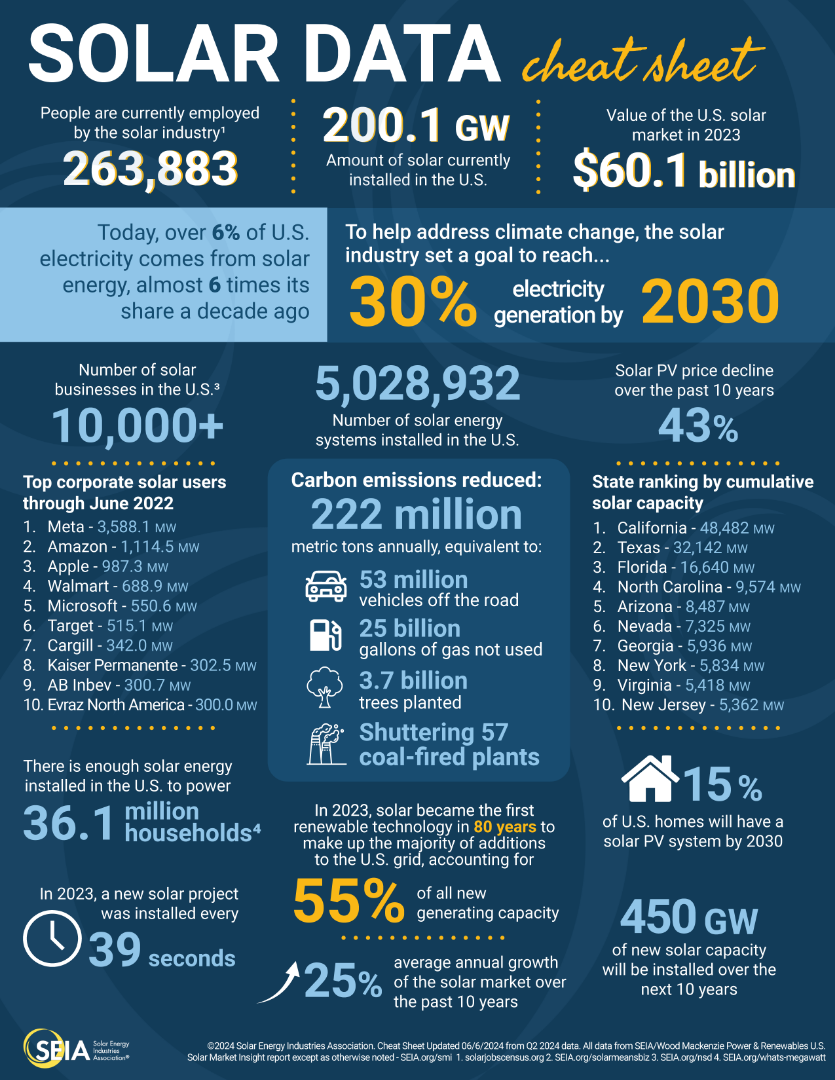
Infographic provided courtesy of the Solar Energy Industries Association (SEIA)
The Sol SOURCE is a publication that the Sol Systems team distributes to our network of customers and solar stakeholders. This publication contains current trends, expert observations, and statistics from real-life renewable projects. The news and resources reflect information collected from trusted industry sources and interviews with our team.
